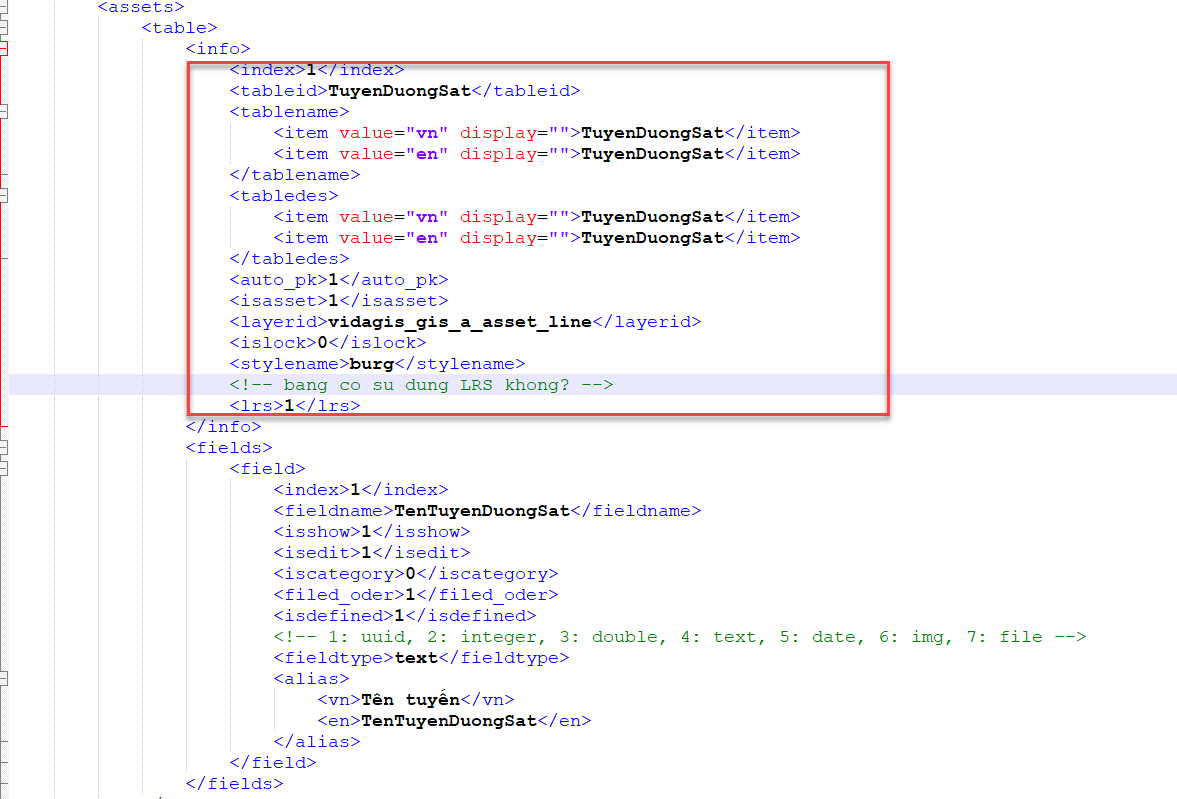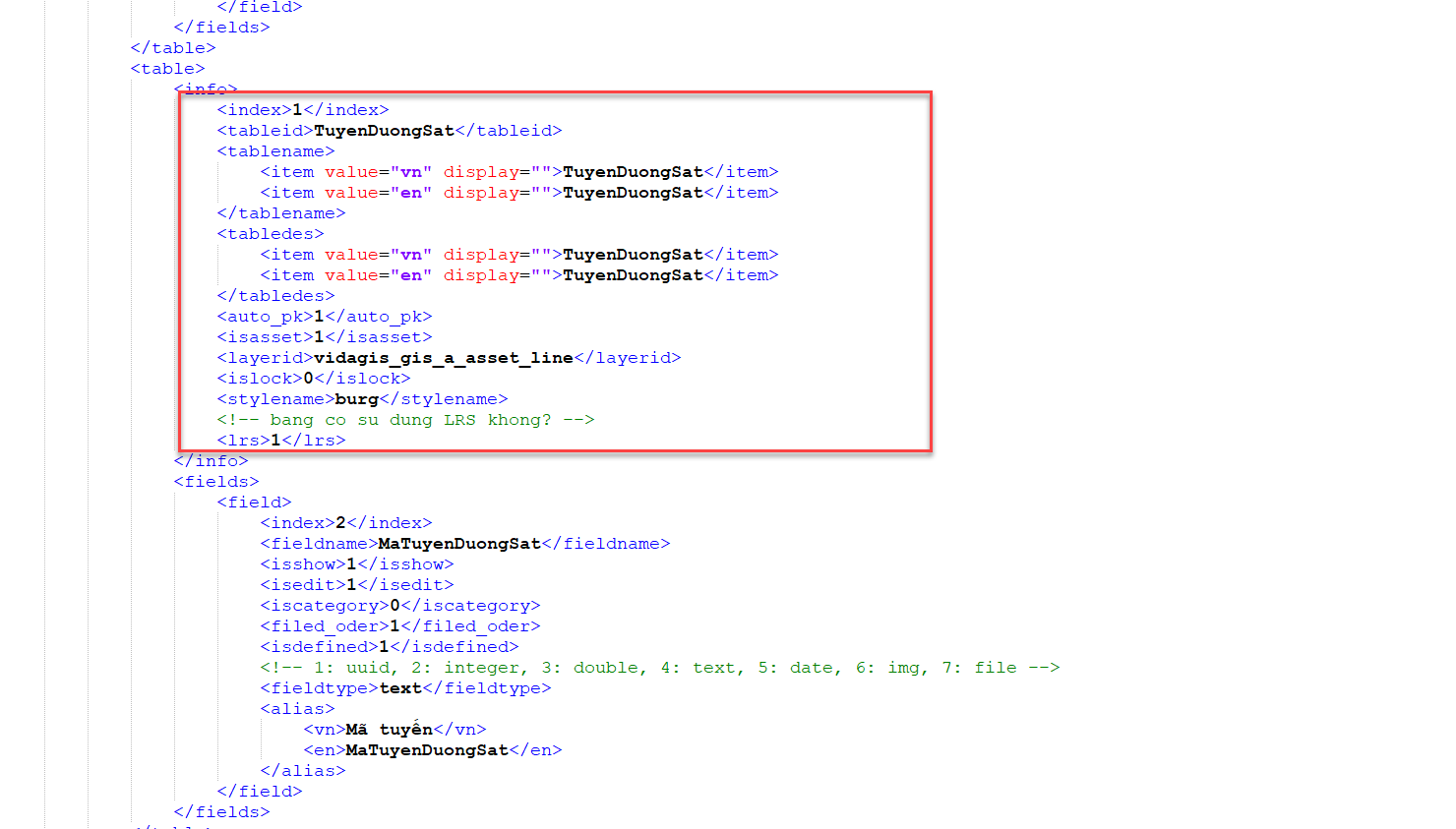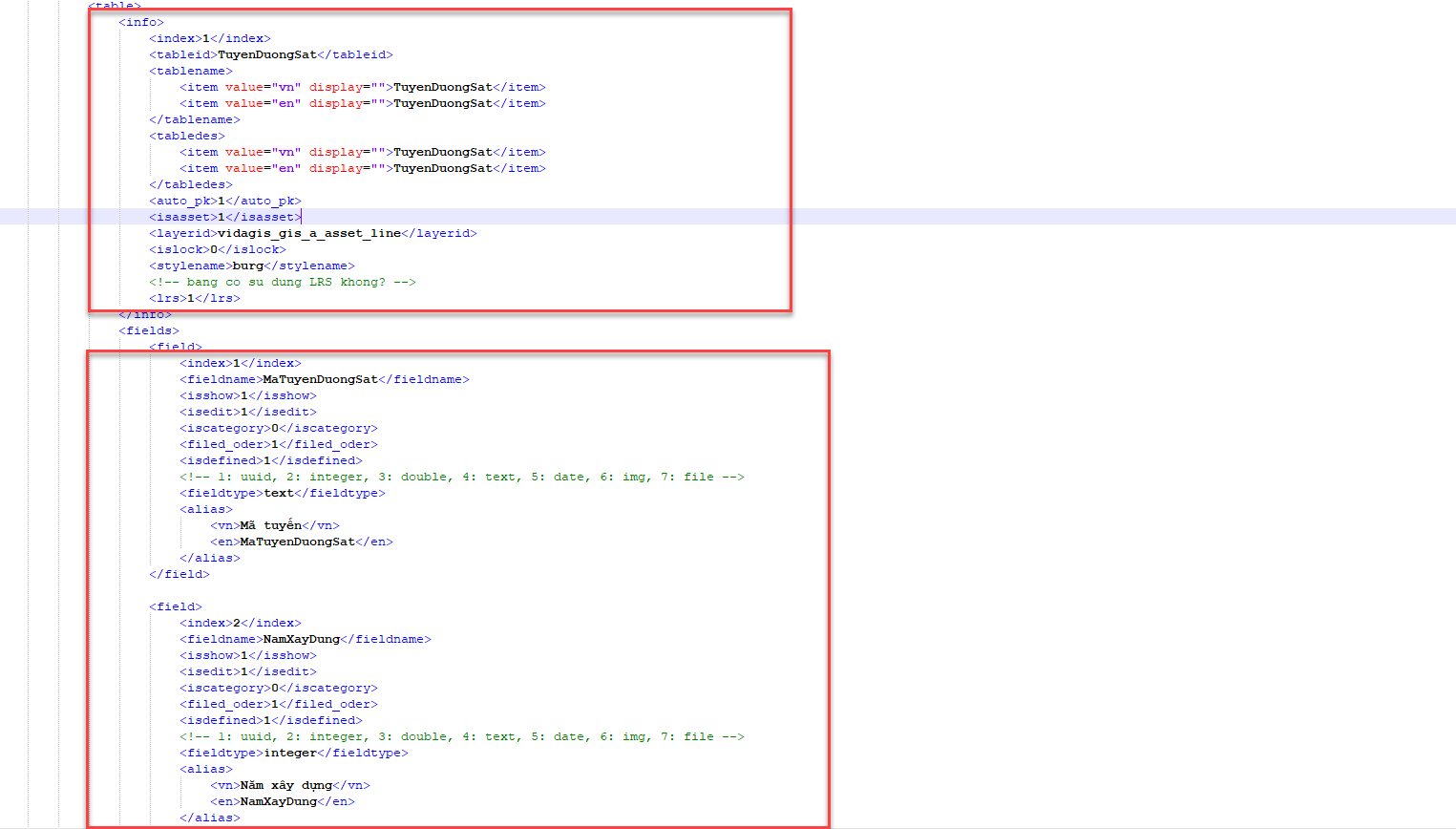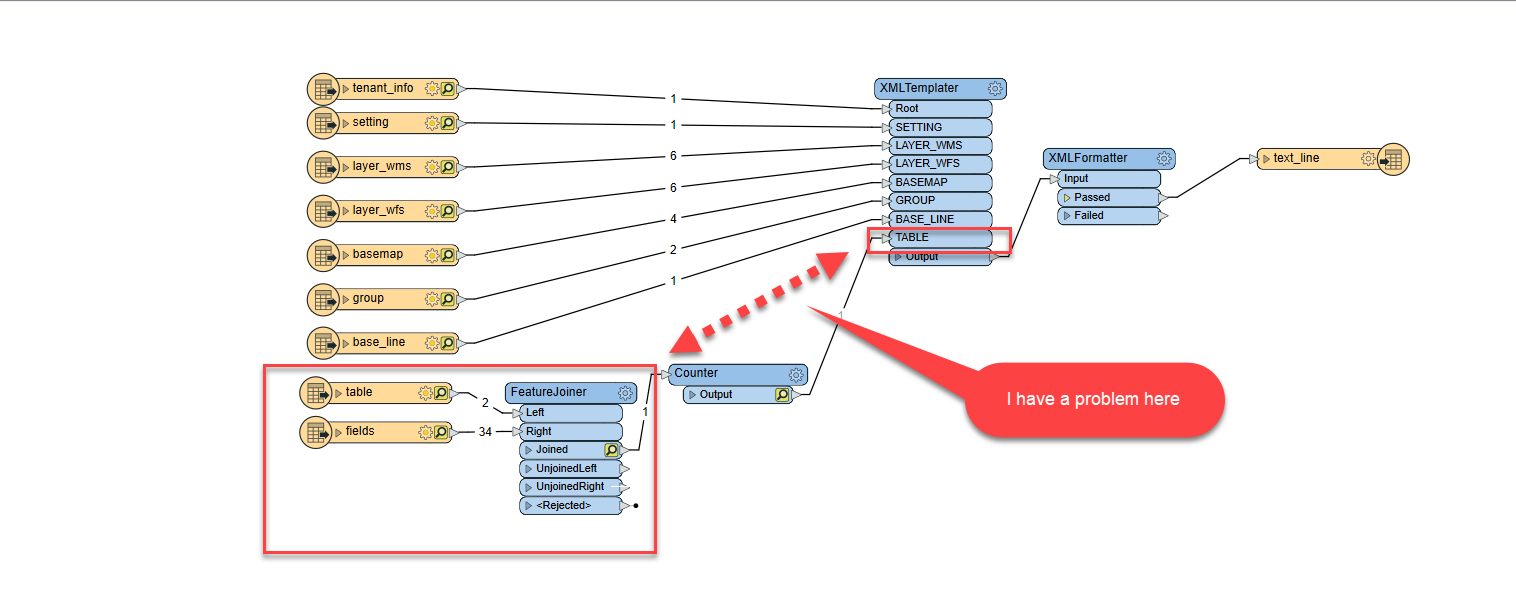I use XMLtemplater to design my XML file from Excel, but i have problem with the result:
This result, it coincides with each output data field:

 I want to group like this:
I want to group like this:
 And this is my model FME:
And this is my model FME:
 Anybody help me, pls !
Anybody help me, pls !
in my excel file, the fields "table_id" in sheet "table" and "table_id_field" in sheet "fields" are key fields to link these two data tables together
Best answer by debbiatsafe
View original





